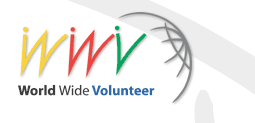Report (Part 3): Sustainable Development Convention 200231 October 2002 © ICVolunteers and IBEX, Geneva, Switzerland Contents
People-Connector: HIV/AIDSTime: 30 October 2002, 13:30-14:30 Location: C-3 Chair: Robert Sadleir; UNAIDS Presenters/ Participants: Jean Louis Lamboray; UNAIDS, Jaime Saborio; UNAIDS Bruno Oudet Reporter: Aida Nejad (ICVolunteers) Languages: English Key words: HIV/AIDS, network, computer, information technology, communication and dialogue Mr. Lamboray opened the session with an introduction to the People-Connector project to be launched in May 2003 by UNAIDS. He said the term "gathering minds" could capture the spirit of the of the project equally as well as its current name. The project itself originates from the notion that combating HIV/AIDS is community driven rather than commodity driven, as illustrated by an example from Thailand. The use of information technology is a key means to influencing communities. It is furthermore base on the idea that the use of information technology is a key means to influencing communities. The pilot languages will be English, French and Spanish but they are looking to expand the range of languages in the future in order to reach a wider audience. The people-connector's main implementing partner at this time is Thailand. Surprising Issues Mr. Lamboray addressed some of the issues raised by the participants and replied that it is important to target at least the area that does have access to the internet and email, and increase coverance will eventually follow. Furthermore, printed media solutions may also solve initial problems with poor internet connectivity. Interesting Questions Mr. Sabario replied to one of the concerns of the participants with respect to the the problem of lack of confidentiality, saying that no programs are 100% secure but steps had been taken to protect confidentiality. Conclusions Posted: 2010-1-04 Updated: 2010-1-05 | ||








